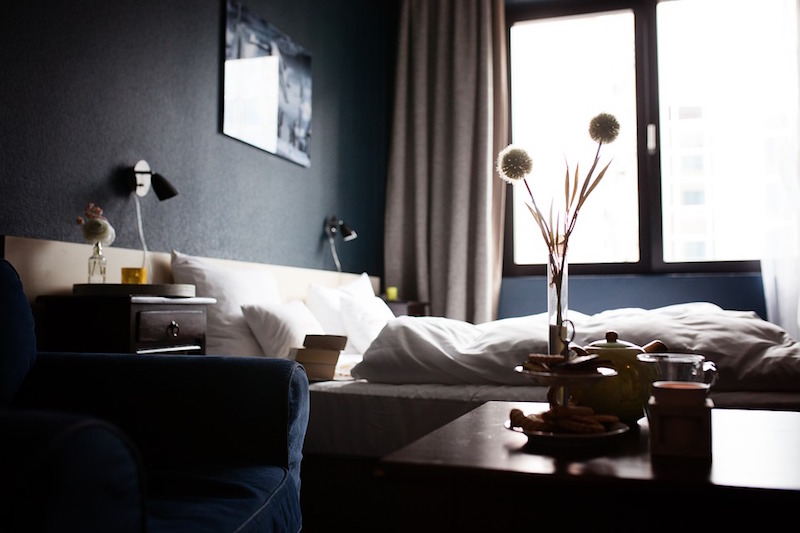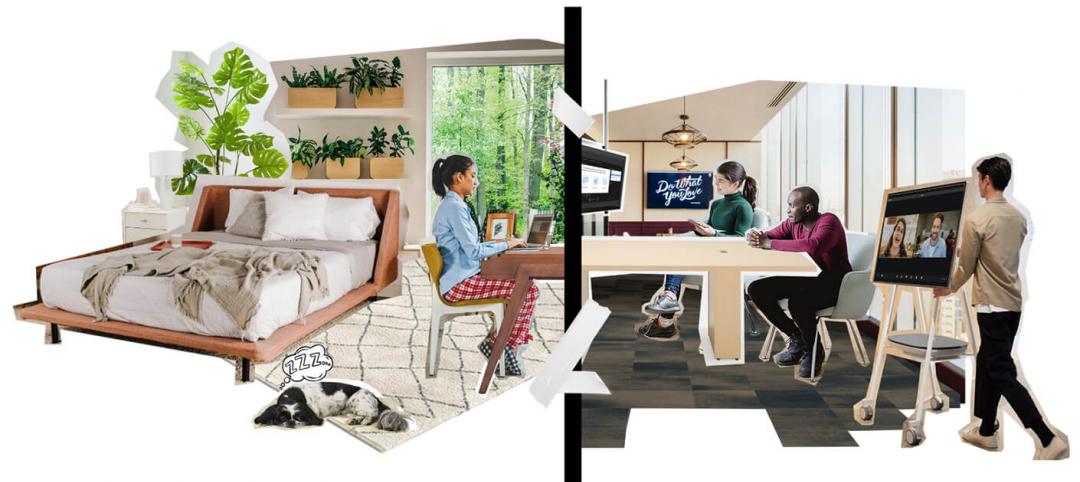The design and marketing of hotels once focused primarily on providing ‘a good night’s sleep.’ However, in recent years, hotels have striven to respond to the lifestyle of mobile workers, millennials and ‘bleisure’ (business/leisure) travellers. They have sought to distinguish their brands and meet their guests’ demands, providing a variety of in-room perks and enhanced IT/AV capabilities, alongside the promise of an experiential stay. The result has been that the bed has been both physically and metaphorically pushed to one side in hotel design, in many cases along with the prerequisites of a good night’s sleep.
However, prompted by the emergence of the ‘always-on’ lifestyle, we have also seen a rise in society’s engagement with the notion of ‘well-being’ and an increased understanding of the role that sleep plays.
There is a growing awareness of the impact of sleep on both physical and mental well-being. Sleep is now understood as vital for processing the cognitive activities of the day, for learning, storing memories, and for the body to repair and regenerate. As a result, for many people sleep is now increasingly seen as aspirational, and rather than boasting of surviving on less than four hours sleep, it is becoming more common to speak of achieving the mythic eight hours.
Sleep is now very much in the mainstream media, and marketable. This can be seen by books such as Arianna Huffington’s ‘The Sleep Revolution’ appearing on bestseller lists, in the growing market for sleep-promoting products, and in the emergence of tech start-ups responding to this demand.

At this time, when sleep has become a marketable commodity, the hotel sector is well placed to respond to the increasing demand for the ideal sleep environment. Yet hotels have generally developed a poor reputation as a place for sleep. In part, this is a result of a guest’s heightened state of alertness while sleeping in unfamiliar surroundings but also, and all too frequently, it is a product of poor hotel design. The wide range of internet articles offering advice on ‘how to sleep better in hotels’ are testament to this point.
In the coming years, we can expect to see a growing trend within hotel design, and in hotel brand offerings, towards the promotion of ‘sleep experiences’ in hotels. To a certain extent, this is already happening, but it is typically limited just to the specification of the mattress and linen types, to ‘pillow menus’ and to sleep focused dining menus. To provide a true ‘sleep experience’ we still have a long way to go. So how can we as hotel designers, working alongside the brands and operators, meet this demand for the ideal sleep environment, and how could this inform the future of hotel guestroom design?
In the first instance we must, of course, always get the basics right. Primarily this means addressing the issues of temperature, lighting, and acoustics.
We know that a cool room, around 18 Celsius (65 Fahrenheit), provides the best environment for sleep.
Lighting design should recognise the effect it can have on the body’s circadian rhythm. Lighting levels and light types act as cues for the production of the sleep-inducing hormone melatonin or the activating hormone cortisol. When specifying lighting, we should consider scene-setting technology in order to adjust the light type and levels when winding down to the bedtime routine. We should also implement blue light filters to electronic devices, which may otherwise inhibit melatonin production.

Regarding acoustics, guests are particularly susceptible to sleep disturbance from noise in hotels due to the unfamiliarity of the sounds and their resultant higher state of alertness, known as the ‘first night effect.’ Careful acoustic design of the guestroom shell along with the provision of constant ambient sound (white noise) can reduce the difference between background and peak sounds to minimise any disturbance.
Beyond these basics, however, we could go further and exploit the fact that hotels provide us with the opportunity to design environments which can be more carefully controlled than those that guests may typically experience in their own homes.
In principle, we are already in a position to regulate our perfect sleep experience; new technologies could be effectively implemented such as pink noise (a softer variant of white noise) combined with neurosensory algorithms to induce sleep. The temperature, the light level, the light type and the rigidity of mattresses could all constantly adjust through the night in response to sleep monitoring systems such as ‘smart pyjamas’, i.e. wearable monitoring systems, or better still the ‘smart mattress.’ At the end of our sleep, we could be gently woken at the most appropriate point in our sleep cycle by a light clock, or entire light walls, using soft light mimicking that of the rising sun. We could have access to our sleep performance data and an associated action plan. This could all be achieved by inputting our variables into the hotel sleep management system at the beginning of our stay to enjoy this sleep experience anywhere in the world.
At a hotel brand level, the response to lifestyle trends such as mobile working has led many, such as citizenM, to encourage the guest to live, work, and socialise outside their rooms. If taken further, this approach could lead to the emergence of brands which define the room as a ‘sanctuary for sleep’, undiluted by the conspicuous presence of the work area, and with all other guest facilities provided in the front-of-house spaces.
Finally, looking further ahead, the concept of ‘dream management’ could add a further dimension to sleep. Brain scanning technology has enabled us to see vague images of dreams and researchers have now also managed to induce ‘lucid dreaming’ in participants. This is the sensation of a person being able to actively recognise that they are dreaming, making it possible for them manage, and participate in, their dreams in real time.
Maybe in future, hotels really will be able to guarantee ‘a good night’s sleep’?
Sleep well.
More from Author
Perkins and Will | Sep 19, 2023
Transforming shopping malls into 21st century neighborhoods
As we reimagine the antiquated shopping mall, Marc Asnis, AICP, Associate, Perkins&Will, details four first steps to consider.
Perkins and Will | Jul 20, 2023
The co-worker as the new office amenity
Incentivizing, rather than mandating the return to the office, is the key to bringing back happy employees that want to work from the office. Spaces that are designed and curated for human-centric experiences will attract employees back into the workplace, and in turn, make office buildings thrive once again. Perkins&Will’s Wyatt Frantom offers a macro to micro view of the office market and the impact of employees on the future of work.
Perkins and Will | May 30, 2023
How design supports a more holistic approach to training
For today’s college athletes, training is no longer about cramming team practices and weight lifting sessions in between classes.
Perkins and Will | Dec 20, 2022
4 triage design innovations for shorter wait times
Perkins and Will shares a nurse's insights on triage design, and how to help emergency departments make the most of their resources.
Perkins and Will | Aug 30, 2021
The great re-shuffle & re-think
In this new hybrid environment in which we cater to how our employees work best, how will we manage new hybrid work practices and etiquette?
Perkins and Will | May 18, 2020
Global design firms collaborate on new COVID-19 mobile testing lab to bring testing to vulnerable communities worldwide
Perkins and Will, Schmidt Hammer Lassen Architects, and Arup Group develop scalable solutions for increased testing capacity within high-density and under-served neighborhoods.
Perkins and Will | Jun 7, 2019
Workplace wellness: Top 3 tips for Fitwel certification
How can thoughtful design encourage healthier choices, lifestyles, and work environments?
Perkins and Will | Feb 27, 2019
ResilientSEE: A framework to achieve resilience across scales
Conceived in the Boston studio of Perkins+Will, the ResilientSEE team developed a resilient planning framework that can be applied to other neighborhoods, cities, and countries.
Perkins and Will | Nov 28, 2018
Amazon HQ2 and the new geography of work
The big HQ2 takeaway is how geography and mobility are becoming major workplace drivers.
Perkins and Will | Sep 4, 2018
It takes more than money to fund resilience
Resilient design, much like all projects in the built environment, requires funding.
















